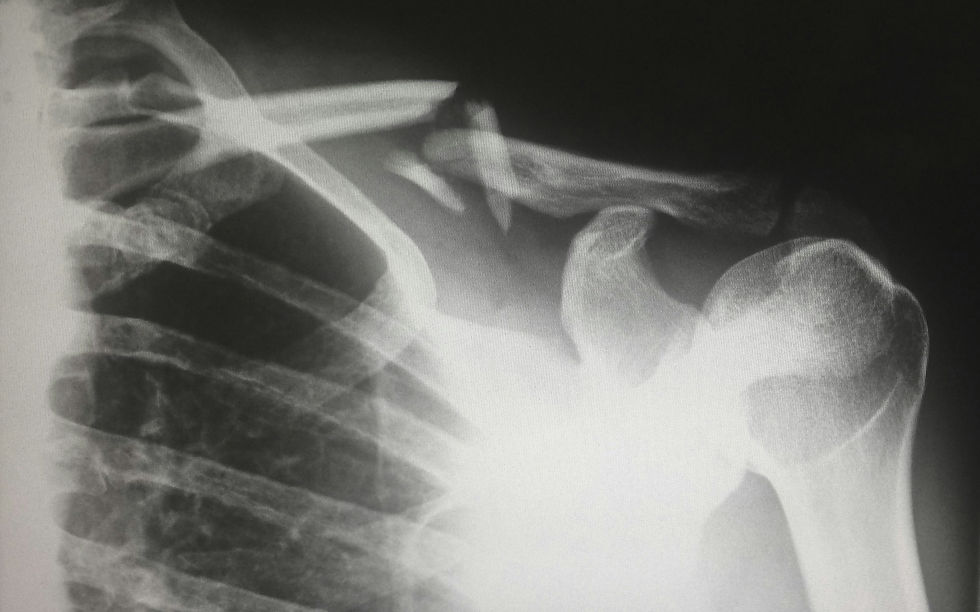The Blanket With A Brain
- marketingc8
- Jun 1, 2022
- 3 min read
Let’s rewind, for a moment, all the way back to the first minutes of your life on Planet Earth. Maybe you were in a hospital. You were probably crying. So (assuming you had a traditional, straightforward hospital birth), what did the midwife or nurse do upon your fresh entry into the world? They placed you in your mother’s arms.
A lot happened in those brief moments as you lay embraced by your mother. The quickened heart rate and breathing started to calm down and regulate itself to life outside the womb. The contact stimulated digestion and an interest in breastfeeding. Friendly bacteria made their way from Mom’s skin to yours, protecting you against infection. The phenomenon, known as “skin-to-skin contact” after birth or “kangaroo care” is widely encouraged by organizations from UNICEF to the World Health Organization. And scientists have shown that this initial embrace has both short- and long-term benefits to brain development for you, the baby.
Touch, it appears, is the first sense that we come to know intuitively as human beings. Yet it is also the most under-appreciated. The eyes can feast on art, social media, or Netflix. The ears tune into Beethoven, Kendrick Lamar, or all the noise outside. The nose smells cookies in the oven (or something burnt) and the passing whiff of perfume (or body odor). Taste, and its comrade the tongue, have food. But what about touch?

Photo credit: Photo by Rishabh Dharmani on Unsplash
A 2016 article tackles this question by telling the story of Igor Spetic. Spetic has had no right hand since 2010, when his forearm was “pulped” in an industrial accident. Surely, the sensation of touch vanished from the space his hand used to occupy…right?
Even years after the accident, the pain was “unbearable, twenty-four seven, as though my hand were in a clamp,” he said. Spetic’s mind was playing tricks on him. It was as if he was reliving the pain wrought in that final moment when arm and hand were still connected. Spetic was suffering from a widespread phenomenon observed in amputees called phantom limb: “His hand is so much there from the brain’s point of view that the brain may be creating the pain it thinks the hand ought to be feeling, the last tactile sensation it can recall.”
Luckily, he met a guy—Dustin Tyler, a lead scientist on haptic technology (a field colloquially known as “3-D touch”). In a lab, Tyler helped connect a prosthetic hand, which had wires that connected to “interfaces” installed in a prior surgery in what remained of Spetic’s arm. The prosthetic hand had twelve pressure sensors, which were transmitted in the form of electrical waves via the wires.
With the hand, Spetic can feel nineteen sensations. He can feel different degrees of pressure. He can even stem a cherry—not by watching the action, but by feeling it.
One day, he tried without the prosthesis, manipulating a virtual hand in virtual space, as shown on a screen in front of him. Using his head and the muscles in his arm, he picks up a virtual ball. The stimulation (electrical feed) is turned on. “I can feel the ball in my thumb and finger,” later correcting himself to say “this space” where his digits would be.
The stimulation did not just allow Spetic to feel again with his right hand. It liberated the space—by tapping into neural circuits in the upper arm, it redefined his hand’s relationship with touch, freeing it from the trauma and “emergency state” it found itself in since the accident.
Touch may not seem like much. But Beethoven’s music would not reach our ears were it not for his preternatural feel for the piano, his fingers gauging pressure as they floated across the keys. Tyler, the scientist that worked with Spetic, says “the most important sensing we do with our fingers is to register incredibly minute differences in pressure, of the kinds that are necessary to perform tasks, which we grasp in a microsecond from the feel of the outer shell of the thing. We know instantly, just by touching, whether to gently squeeze the toothpaste or crush the can.”
Anatomy is not just bound up on the inside. It thrives on the outside, on the “blanket with a brain in every micro-inch” that we call the skin. This is the first of a mini-series devoted to the anatomy of touch that happens along the surface of that vast, rich, and teeming blanket.
Future blogs will “touch” on itch receptors, corpuscles, massages by email, and hug shirts!
.
.
.
.




Comments